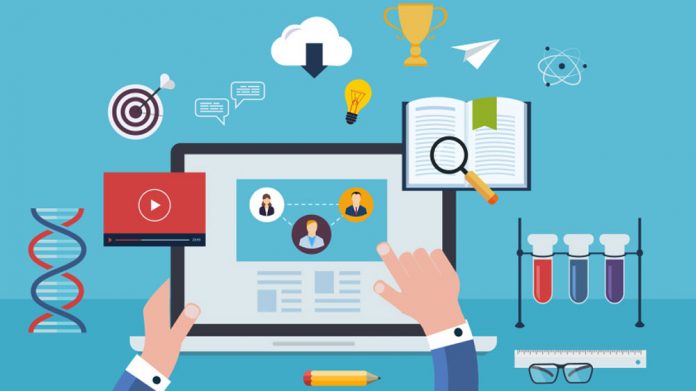“There will be a time when electronic devices will talk to humans and each other via internet”. This was what Kevin Ashton said when he prophesised “Internet of Things” back in 1999.
Internet of things is the expansion of internet in physical devices and everyday ‘smart’ objects, allowing them to share and transfer information with each other in order to achieve an arbitrary task.
One of the prime examples of internet of things is Alexa. You could ask Alexa to find who the best thesis helper is, and you will be provided with an adequate answer.
Internet of things has altered the conventional ways of education and education industry in a number of ways like
Let’s look at them in more detail.
Making education interactive with smart boards
What would be a more intuitive way of learning? Reading about volcanoes in geography or watching a video related to it? Definitely the later.
- Changing paradigm of classrooms
Chalk boards have become obsolete, smart boards are the future. These smart boards have made learning interesting, interactive and hence much more effective. What took lectures to be taught in a classroom can now be taught in a few minutes, thanks to smart learning. Teachers can use internet, videos and graphics options to make lectures more meaningful.
- Lectures are more collaborative
The lectures can be individually viewed by each student on their electronic devices like mobile phones and tablets, and they can give their inputs too. This allows for a collaborative education between teachers and students, making exchange information easier.
- Note taking made easier
Smart boards record all the notes taken in the class, which can be shared with everyone later. This encourages students to be more focused in understanding the concept.
Addressing weak students and facilitating them
- Helping children through analytics
It is a common sense that not all students have the same pace of learning. Some are better at grasping concepts than others. Some need special assistance and extra help. But with the conventional ways it is hard to cater each student individually. Internet of things can be used to analyse each student’s work and provide analytics to teachers.
This has allowed teachers to see how many students are struggling with their studies and in what areas specifically. The struggling students can then be given extra guidance and thus ensuring that the whole class have the same pace.
- Ensuring education for physically challenged
Internet of things has also helped cater disabled students. For example, if a student is vocally challenged, there are smart gloves that can translate the sign language into speech or even text. The special children are not be deprived from the right of education.
IoT has allowed global networking
Internet of things has connected the academia all over the world, whether they are teachers, students, mentors etc. all of them are connected with each other in real time. A teacher can be delivering lecture in one part of the world and students all over the world can be attending that lecture through various means, e.g. computers, laptops, tablets and mobile phones.
Students from all over the world can also collaborate with each other on different assignments and projects. Internet of things has ended educational discrimination throughout the world.
Has made management efficient
- Managing attendance
Some tasks that wasted a lot of precious time before are now being done without human interference, for example marking attendance.
Students are provided with RFIDs that have all the basic information related to a student e.g. their roll number, name, class, section, familial information etc.
Whenever a student enters a class, the RFID detector marks student’s attendance automatically. The records are collected without wasting any time and without human error and sent to administration, teacher and parents simultaneously.
- Handling miscellaneous tasks effectively
These RFIDs can also be used for other purposes like making cashless payments in cafeteria or for issuance of books from library.
The books have become advanced
Paper based books are very expensive and are constantly being outdated as new things are added while the books are revised. It is not feasible to buy new books every time a revised version is published.
Internet of things has allowed QR code to be assigned to each book. Every time the QR code is scanned it will provide all the information related to the book e.g. new material added, additional content related to the book, visual or graphic effects to explain a part and other information that might facilitate the reader.
Educational institutes are more secure
- No trespassing
Digital tags are given to everyone entering the premises of the institute whether they are students, teachers or even visitors. This allows real time tracking of everyone. Allowing maximum security for the institute and ensuring that only the related people are in the premises. Parents can track their children both in and out of school. They also have access to school bus’s GPS navigation.
- Keeping everyone updates
In case of any emergency, for example fatal changes in weather conditions, the security protocols and emergency indicators can be instantaneously sent to everyone on their mobile phones. Latest bulletins and news updates can also be provided to everyone simultaneously and in real time.
Sensors can automatically detect any hazard e.g. fire or smoke and notify everyone. Any news for example a short circuit or even if someone is stuck in the lift can be notified to authorities.
Summing up
These applications were just the tip of the iceberg. It is predicted that in near future, when technology will become more advanced, the internet of things will be incorporated much more in human life and become a necessity, just as the internet has become now.










